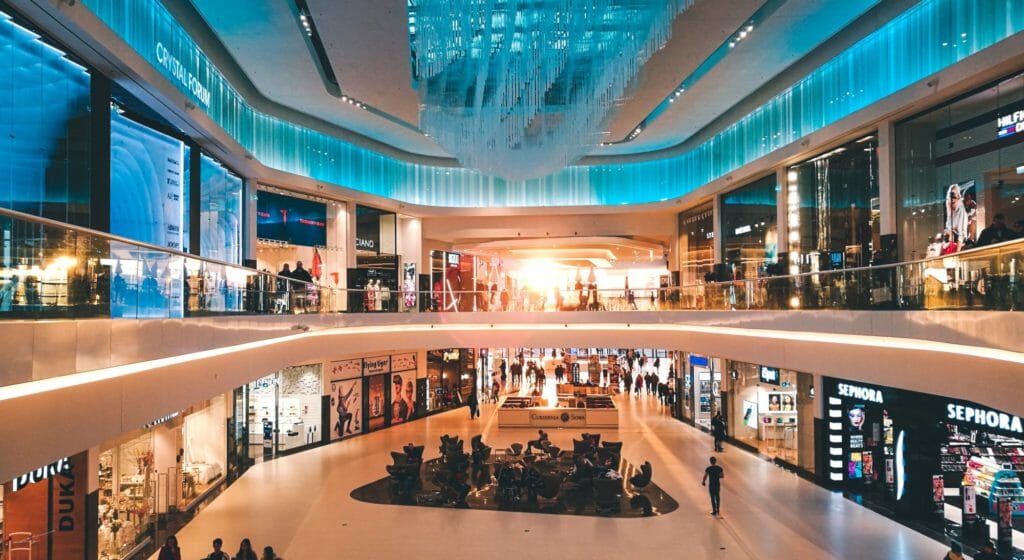Article Courtesy of Management One, a platform that delivers data-driven planning via passionate retail experts and help business owners all over the world reach new levels of success.
See the interactive post updated daily with changing circumstances, here.
The Threat is Real
Health officials now believe that the spread of coronavirus (Covid-19) in the U.S. “is inevitable”. Whether the coronavirus outbreak elevates to a global pandemic, or simply dissipates with the passage of winter, the damage has already begun. Global stock markets are taking a hit, and the effects of production slowdowns and restricted movement are bound to impact retailers in the weeks and months to come.
Facebook has canceled the in-person portion of their upcoming F8 conference in May and some businesses are starting to adopt a work-from-home policy, so the initial effects are beginning to develop here in the United States.
Supply chain issues
According to Cao Jiaping, Chairman of the China Chamber of Commerce for Import and Export of Textiles and Apparel, China holds a 31.5% market share of textiles and apparel in the U.S. With many of these factories closed down, retailers could start to see the effects as soon as mid-April, though buying schedules make it more likely that major effects will be felt as retailers start stocking for the fall season.
Retailers hustling to source goods outside of China will find themselves in a crowded market as some companies have already started moving production overseas amid the recent tariff wars in China. US imports of goods from Vietnam, for example, have soared 51.6%. Other countries like Malaysia, Thailand, Indonesia and Taiwan are also recording double-digit growth.

Reduced foot traffic in retail stores
With increasing media coverage of new cases springing up across the country, many consumers are beginning to avoid high-traffic areas, and even global air travel is already seeing declines. The International Air Transport Association (IATA) is expecting global demand for air travel to fall by 4.7% in 2020, the first overall decline since the global financial crisis in 2008-09. If this trend spreads into the U.S. airline industry, retailers in areas dependent on tourism will find themselves on the front lines.
Reduced capital and confidence
The hits to the stock market this week only accelerate consumer concerns about the impact the coronavirus could have on their wallets. Bob Schwartz of Oxford Economics warns that consumer fears could “escalate and push households into a defensive mode,” reducing perceptions of available cash and limiting buying power. This mindset will affect luxury items first, but it could translate into a larger shift away from boutique stores as price-sensitivity increasingly dictates purchasing decisions.
What retailers can do right now

Be RELENTLESS
This is NOT the time to sit on the sidelines and hope to simply ride the storm, but it isn’t the time for panic, either. Remember that all of your competitors are responding to the same challenges you are, and treat this as an opportunity to apply unrelenting creativity and hustle towards safeguarding your business.
President Eisenhower said it best, “What counts is not necessarily the size of the dog in the fight; it’s the size of the fight in the dog.”
A plan of attack
There are countless ways to address concerns over this developing situation. Here are the top ten things retailers can focus their attention on right now before the effects hit home.
- Confront the threat
- Hoping for the best is NOT a strategy. Accept the fact that a real threat to your business is imminent, and organize a team meeting with your employees to formulate a strategy and manage expectations.
- Contact every vendor
- Find out what is getting shipped and how they are dealing with supply chain interruptions.
- Dig deep on non-China vendors and factories to learn what fabrics or other components they receive from China.
- Put commitments of accepting goods in your contracts with vendors, based on issues regarding coronavirus threats.
- Start the conversation about fall orders now, and position yourself in the front of the line by communicating clear needs and timelines for delivery.
- Hustle to get the goods!! Reassess your vendor list and sourcing channels to explore new product lines that could resonate with your audience.
- Analyze your product classes
- Inventory is the lifeblood of your store, and it’s important to know how these goods flow in and out if you are to make more informed decisions. Organizing your goods into meaningful classes and sub-classes—and structuring your sales reports around them—will provide quicker insight into what merchandise is resonating with your customers. This data is crucial when prioritizing which items to source as you enter a difficult buying market.
- Markdowns: Hold off on clearance
- The risk of inventory shortages should give you pause on that next clearance sale. Evaluating your inventory flow at the class level can reveal which areas can absorb a markdown without stocking out.
- Consider increasing markups
- Don’t stop at markdowns. Spend the time and energy necessary to see where you can grab a little more margin from hot sellers.
- Assess your financial position
- When was the last time you did a full break-even or a comprehensive financial analysis of your store? A reality check could help uncover areas of flexibility to help increase your cash flow. Not sure how to effectively run this analysis on your business? Contact us today!
- Approach your landlord with options for rent adjustments.
- Prepare staff for more performance-based compensation options.
- Scrambled merchandising
- Consider stocking temporary items that address customer concerns or leverage their altered behavior. For example, Adweek is reporting that searches for medical masks on Amazon have spiked by 17,000% in the last month, with prices on related medical gear seeing double-digit increases. Adding these items to your store or offering fashion-friendly alternatives could spark interest and increase traffic.
- Impulse, cash-wrap products like phone cleaners and stylish hand wipe cases are easily sourced and could provide a useful influx of cash to offset merchandise delays.
- Alleviate customer concerns
- Your customers are seeing the same media coverage about the coronavirus as you are. Getting ahead enables you to use all available lines of communication to confidently ease their concerns about product availability and even store cleanliness.
- Leverage your retail community and share information.
- Are you active in your local or online retail community? Not all businesses are in direct competition, and reaching out to fellow retailers could reveal strategies that might work in your store as well.
- Take advantage of new opportunities
- The collapse of the luxury market in Asia opens the door to get vendors not previously possible. They still have product, but they may have lost doors for distribution.
- Focus on classes with vendors that have supply on hand.

Adapting strategies with help from Management One
As a leader in retail consulting and merchandise planning for over 3 decades, Management One is uniquely capable of arming our retail clients with the tools they need to combat the challenges brought about by coronavirus, or any other market-moving development. Through recessions and downturns, trade disputes and trade agreements, we’ve proven our ability to help retailers power their businesses to the next level, even in the face of stiff headwinds.
We build strong relationships
Supporting your proactivity is our priority. By making ourselves available for consultation whenever a client needs us, and creating tailored solutions that meet our customer’s unique needs, we aim to make ourselves an indispensable partner in your success. Our affiliates will work closely with our planners to make changes to planned inventories and sales as data is updated daily.
We present the facts
Management One retail clients have access to a wealth of data about their day-to-day operations. We help surface key insights and opportunities for growth while always being vigilant against areas of possible vulnerability. Through our retail experts and proprietary software, Retail ORBIT, we have become the leading merchandise planning intelligence provider for independent retailers.
We leverage a leading network
With thousands of clients across the globe, spanning a wide variety of verticals, Management One retail experts are encouraged to share strategies and bounce ideas off of their colleagues. There is strength in unity to our collective knowledge that retailers can leverage to their advantage when navigating perilous situations.
Conclusion
Be proactive. Recognize the threat and look for solutions. Control what you can control. Be creative and look for opportunities. (Yes, there are opportunities.) As always, our core purpose is to provide your financial security.
Article Courtesy of Management One, a platform that delivers data-driven planning via passionate retail experts and help business owners all over the world reach new levels of success.
Other Suggested Posts:

